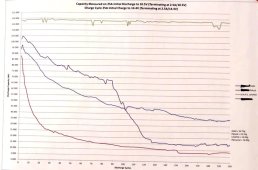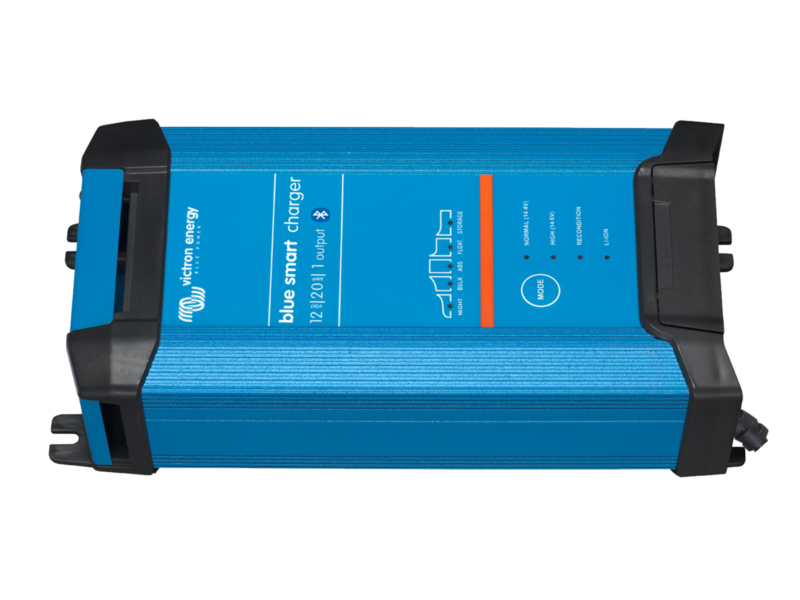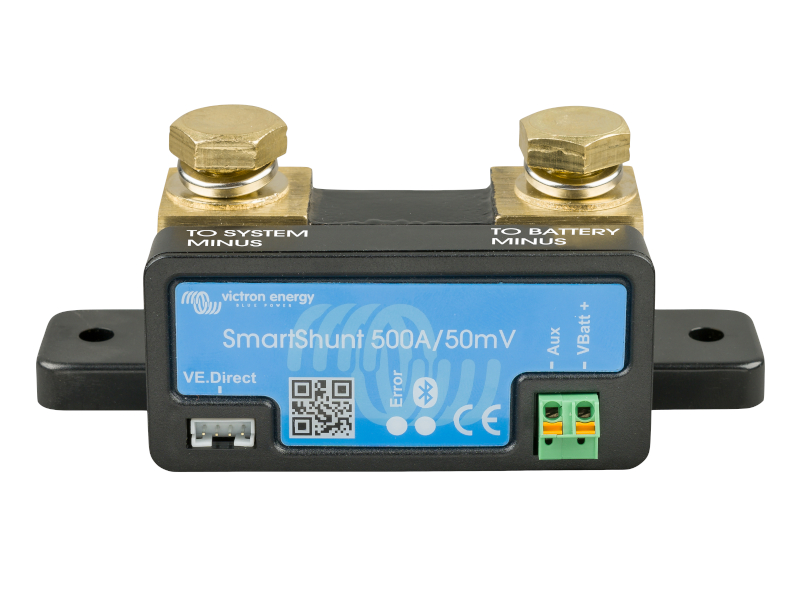Anyone help? Hope I’m ok posting this with embedded links.
I have solar panels but no battery backup, and I wanted to power my computer of an evening with my day’s excess power. I bought this charger, these two 12V lead acid batteries I’m connecting in parallel, and this 3 kW inverter.
I was hoping for more than 8 hours supplying my just under 100 W computer from the 260 Ah (3.1 kWh) batteries. A month ago when I started, the charger was supplying 0.69 kWh into the two parallel batteries, and the inverter was supplying 0.47 kWh into the computer, translating to about 5 hours. Overall efficiency was around 68% which I expected with the batteries not being hugely efficient because they’re discharging within a few hours, and 90% efficiencies for charger and inverter.
The power supplied by the inverter has dropped steadily until it’s now only 0.28 kWh with efficiency of 63% so just under 3 hours computer use. I’m so far assuming it’s not the (new) batteries but don’t know whether it’s the charger or the inverter that’s the problem. I presume one of them is estimating the wrong amount of charge left in the batteries. One place in the charger instructions (and on their website) says they suit up to 200 Ah but another place says 120 Ah.
Is it assuming that the battery is discharged when it’s supplied the 200 Ah? The inverter also seems to think that the battery needs recharging (shown by lights on the control panel) when there should be a fair amount left in.
Any thoughts, people? And can I solve it by for example putting a switch like this in front of the 12 V positive battery terminals and switch from one to other half way through the charging?
Thanks
I have solar panels but no battery backup, and I wanted to power my computer of an evening with my day’s excess power. I bought this charger, these two 12V lead acid batteries I’m connecting in parallel, and this 3 kW inverter.
I was hoping for more than 8 hours supplying my just under 100 W computer from the 260 Ah (3.1 kWh) batteries. A month ago when I started, the charger was supplying 0.69 kWh into the two parallel batteries, and the inverter was supplying 0.47 kWh into the computer, translating to about 5 hours. Overall efficiency was around 68% which I expected with the batteries not being hugely efficient because they’re discharging within a few hours, and 90% efficiencies for charger and inverter.
The power supplied by the inverter has dropped steadily until it’s now only 0.28 kWh with efficiency of 63% so just under 3 hours computer use. I’m so far assuming it’s not the (new) batteries but don’t know whether it’s the charger or the inverter that’s the problem. I presume one of them is estimating the wrong amount of charge left in the batteries. One place in the charger instructions (and on their website) says they suit up to 200 Ah but another place says 120 Ah.
Is it assuming that the battery is discharged when it’s supplied the 200 Ah? The inverter also seems to think that the battery needs recharging (shown by lights on the control panel) when there should be a fair amount left in.
Any thoughts, people? And can I solve it by for example putting a switch like this in front of the 12 V positive battery terminals and switch from one to other half way through the charging?
Thanks







